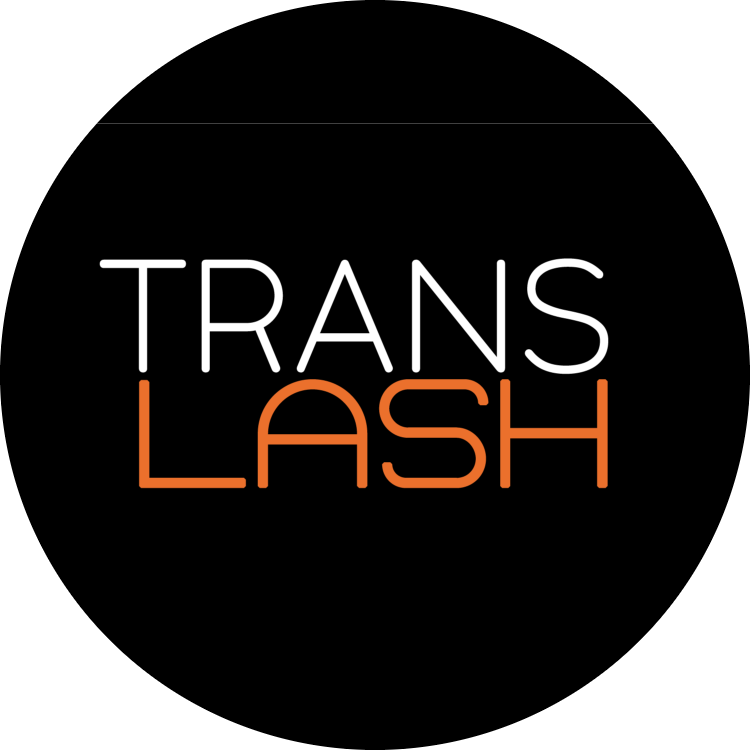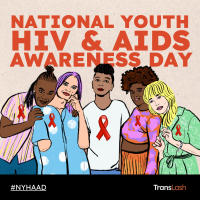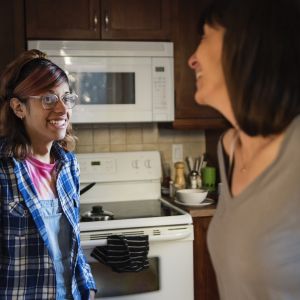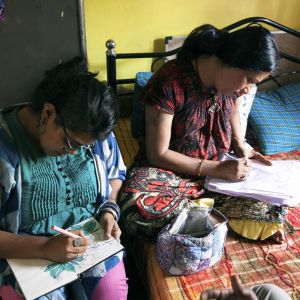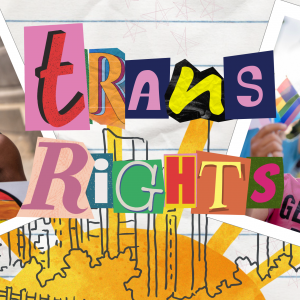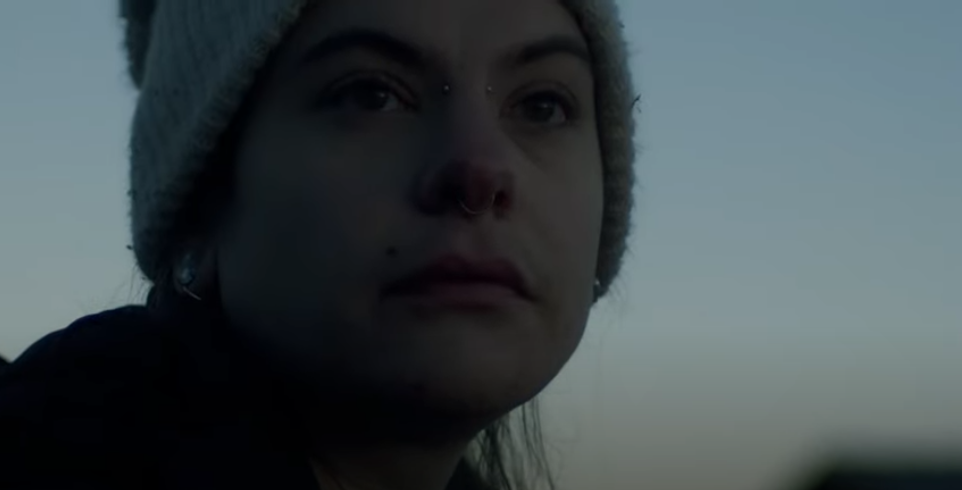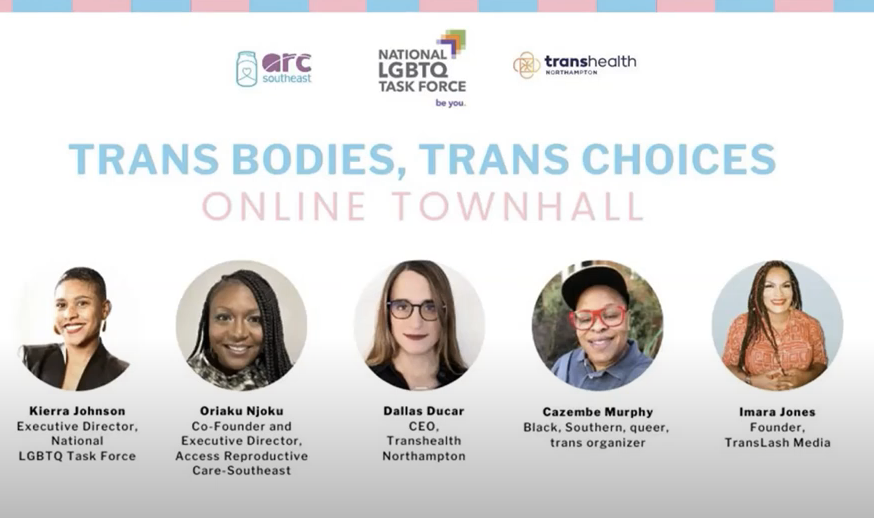by Harmony Cox (they/them)
When I was in middle school, my mom was locally famous as “the condom lady.” People called her this because she worked at an LGBTQ+ resource center, and she used to dress up as a condom to do outreach at street fairs. Other kids might have been embarrassed by seeing their mother dressed as a condom on the evening news, but I still remember that with pride. My mom was a sex educator that lived her values, and I idolized her.
It may not surprise you to learn that my mother was fiercely pro-choice. In fact, she was the kind of crunchy granola third-wave feminist that got disappointed when I declined her offer to throw me a menarche party. Menarche parties, or “first period” parties, are intended to publicly celebrate a person’s first cycle of menstruation and lessen the stigma of periods for those who have uteruses. At the time, I thought the goal of making periods less taboo was noble, but I was too embarrassed to even consider it—too unnerved by the idea of a room full of people discussing my genitals. My mother eventually gave in, settling on a series of phone calls to tell everyone that I was finally a woman in her eyes, and finally in possession of the body that gave me membership to the “sisterhood.”
Of course, she didn’t know I wasn’t a woman. I didn’t know that I was trans either, to be fair. I didn’t even know that nonbinary people like me existed yet. That understanding came later, and I found it in part because I followed in my mother’s footsteps. I wanted to make the world a better place, like she did, and helping people access reproductive health care seemed like a great opportunity to do just that. As a result, I spent years volunteering with Planned Parenthood and other reproductive health organizations, attending marches and fundraisers, and taking various admin jobs to contribute to the cause.
When the work we did was presented to funders or the general public, it was always wrapped in a pretty pink gendered bow. Back in the day, abortion was commonly understood to be a “women’s issue,” and the fundraising and political power associated with that designation was considered to be essential to our work. I embraced it at first. I wore the obnoxiously branded pink t-shirts. I marched and shouted for women and girls. I begged strangers for money by appealing to their love for their daughters and wives. Volunteering with these causes helped me feel like I actually was a part of that sisterhood my mother had promised me—even when it all rang hollow once the adrenaline wore off.
It was only when I began meeting queer and trans people within the movement that I came to understand how profoundly this viewpoint fails us. The first queer and trans friends I made as an adult were fellow volunteers in reproductive justice. I wanted to be good at helping people, so when they told me that trans folks still struggled to get the health care they needed from the organization I was supporting, I decided to educate myself. I learned about the way trans men and nonbinary people have to fight for the reproductive health care they need even in environments that claim to be inclusive. How could we argue we were doing everything we could to help everyone access reproductive health care when such a large population was systematically left out of our work?
I started paying attention to the organizations that were fighting abortion access in my home state of Ohio, and I quickly realized that their scope was much wider than many people understood it to be. It’s important to understand that the opponents of choice and the opponents of queer and trans rights are the same people, and they recognize that they’re on the same team, even if you don’t.
It has always been the goal of right-wing conservative Christians to topple not just Roe, but the entire legal structure of LGBTQ+ civil rights. If you learn nothing else from this essay, learn what I did when I was helping people write responses to things like Ohio’s 16-week “heartbeat bill” abortion ban: the goal for this legislation is to get it legally challenged so it can eventually give the highest court in the land the opportunity to overturn their own precedent. Overturning Roe is not just a political maneuver for these groups, but a symbolic victory that opponents of choice have been voting, praying, and plotting to accomplish for decades. Right-wingers have never been subtle about this, but the social taboos that prevent Americans from challenging Christianity and white womanhood have compelled the rest of us to extend the benefit of the doubt to absurd heights. Back in the early 2000s, most of the liberal feminists I was friends with thought that taking down Roe was a right-wing pipe dream, something to keep an eye on but not take seriously. How little we knew!
But then, queer and trans people always knew. The more queer and trans people I met through my work, the more I understood that they were not only working within reproductive justice out of the goodness of their hearts. They were present because they saw a creeping danger that a movement publicly headed by cis women was content to ignore. As I got to know queer and trans people through my work, the more I saw myself among the community.
Working with queer people who were passionate about reproductive health care introduced me to the actual complexities of sex and gender, including the idea that one could live happily outside of a gender binary. As I came to understand myself as a queer nonbinary person, my previous liberal feminist lens on reproductive health care finally fell away. Once I saw how complex it all was, the more juvenile and silly the “girl power” branding I used to embrace felt. It was like we were playing Barbies while the world burned around us, and only certain people could smell the smoke.
While I had plenty of queer and trans colleagues on the ground doing the work with me, leadership remained painfully out of touch. I remember my shock when Dr. Leana Wen stated that Planned Parenthood should avoid openly supporting trans people because Midwesterners couldn’t wrap their heads around trans folks. We had been contributing to the fight for reproductive health care in Ohio for years, only to be told by one of the most powerful people within the movement that she didn’t even believe we existed!
It’s not like Wen was an outlier, either. The more I embraced my new identity, the more I saw how advocating for inclusivity resulted in pushback and microaggressions galore. Something as simple as getting people to stop using the word “woman” when referring to people who need abortions was a sysyphean battle that we never really won. Trying to get people to take the safety of queer and trans allies more seriously was also akin to pulling teeth. I’d volunteered at clinics during my time in the movement, and I was used to seeing the lurkers with guns who watched us like vultures every time we went in and out of the building. Back when I presented as female, I felt free to ignore them. However, becoming visibly queer attracted their attention in a different and more frightening way. The same people who target abortion doctors at their homes are the ones who target trans activists, and they have the same agenda of using violence to control people’s actions. Nobody I personally know has been shot yet, but that doesn’t mean it isn’t happening.
In the last reproductive health care job I had, I spent months trying to get my boss to take my safety seriously. I was met with apathy, irritation, and empty encouragement to try “self-care” to soothe my anxieties. Somehow, a bubble bath wasn’t enough to help me forget that I’d count as a two-for-one in a holy war if anyone decided to target us. My boss was a cis white woman who was ignorant about the realities of community-based work—and there was nothing she hated more than being told she was wrong. Sure, I had a ton of real-life experience under my belt, but she had a PhD and a grant from other rich folks who were just as invested in the status quo as she was. It was a fight I was never going to win.
Eventually, I learned that my position at the organization was being eliminated. I didn’t have it in me to fight for the gig, even for decent health insurance. It was the last nudge I needed to say goodbye to the nonprofit industrial complex for good. I no longer have the time, patience, or energy to beg arrogant wealthy white women to care if myself or my friends die. Mutual aid or bust.
And yet, I’m still not quite free. In a final twist of fate, I find myself as a trans person in the year 2022, still unemployed and now reliant on the same services I used to volunteer for in order to get the health care I need. I need access to hormones and counseling, and I need to be able to trust that the person I’ll be interacting with to get those things has my best interest at heart. I’m not the only person who needs that, not by a long shot.
So, here I am, a reformed pussy hat liberal turned queer nonbinary anarchist begging you to learn from my mistakes. Only the most gullible among us still believe in the impartiality of the court. The rest of us know Roe is going down, and if the opinion provided doesn’t invalidate the medical right to privacy directly, it’s only a matter of time. They are coming for everything: birth control, gay marriage, everything we took for granted is on the table now. The religious right has been infiltrating government at every level for the last 30 years to build this vicious civil-rights-eating mousetrap, and the Roe decision is the sound of it snapping shut. Things are about to get dark, fast, and we no longer have the time to coddle TERF rhetoric and self-righteous ignorance. Either everyone is protected, or nobody is. If you think they aren’t coming after you when they’re done with us, you’re kidding yourself. So please, please listen to queer and trans voices in the reproductive health care movement. We can’t survive alone, but we can still save each other if we try.
Featured image by Sabrina Gröschke.
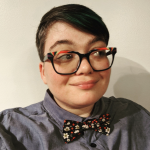
Harmony Cox (they/them) is a queer Midwestern essayist and humorist. Their work has appeared in Catapult, Narratively, McSweeneys, and several other publications. They currently reside in Chicago, where they’re pursuing an MFA. Check out their work and learn more about them at harmonycox.com. Socials: Twitter: https://twitter.com/harmonopoly Instagram: https://www.instagram.com/harmonopoly
Did you find this resource helpful? Consider supporting TransLash today with a tax-deductible donation.


